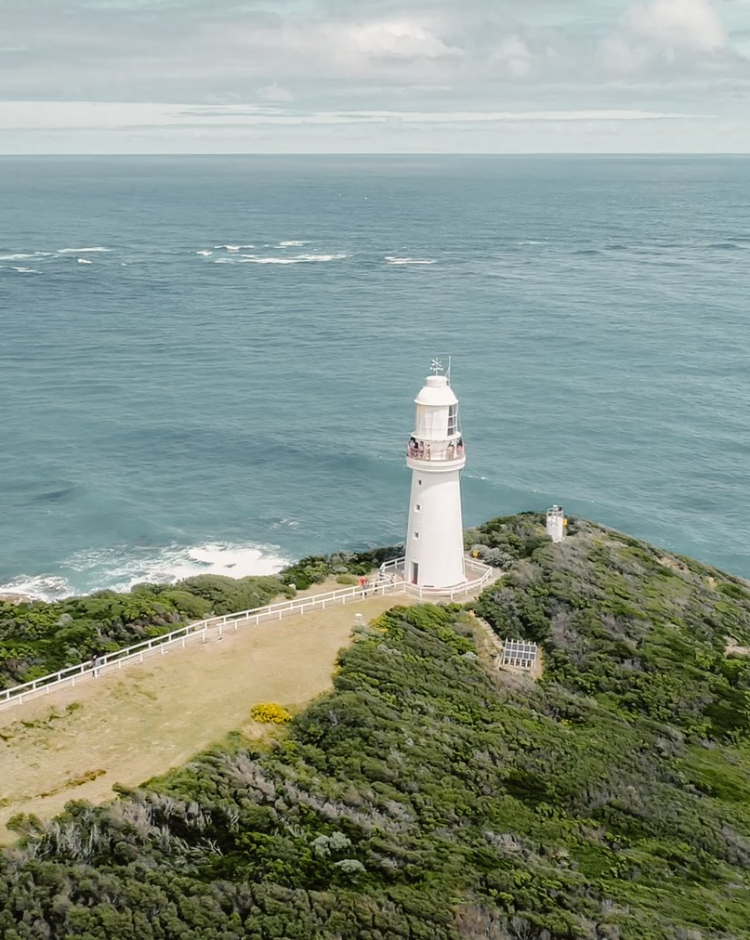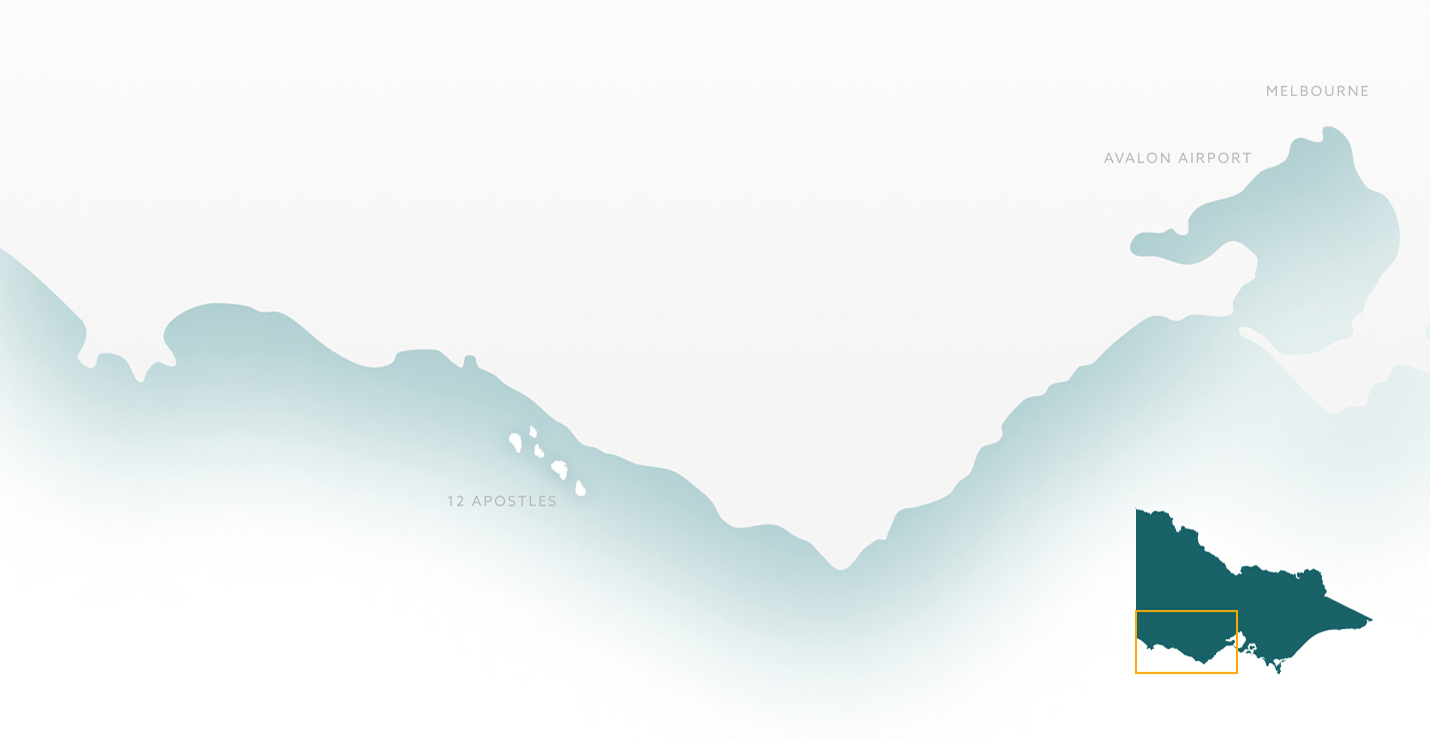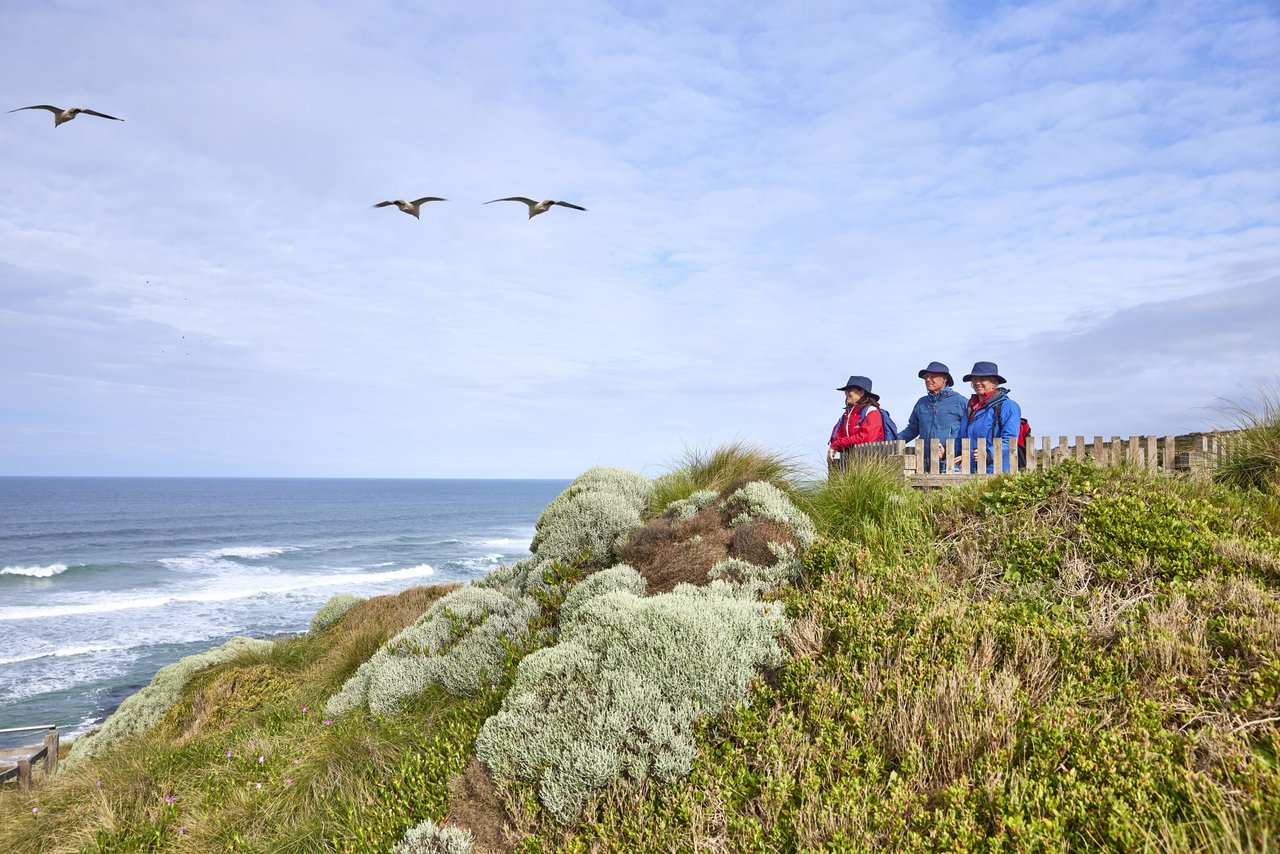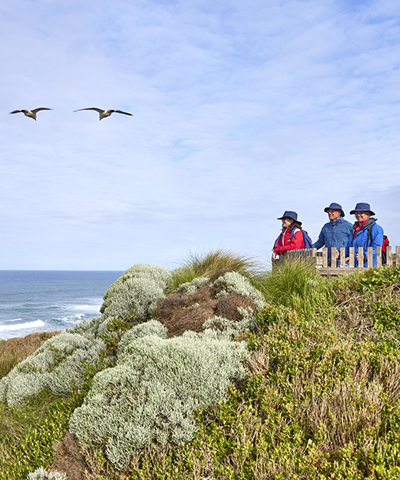

Named by Lt James Grant in December 1800 after his friend Captain William Albany Otway of the Royal Navy, Cape Otway was originally inhabited by the Gadubanud people with evidence of their campsites contained in the middens throughout the region.
Australian Wildlife is in abundance throughout the areas, especially koalas, birds and wallabies which are a popular attraction for visitors to the region.
Whether it be a short walk or a day hike, Cape Otway is an ideal location for those wishing to complete a section of the iconic Great Ocean Walk.
The Cape Otway Lighthouse is a must see as it is Australia’s longest serving, dating back to 1846 when a spate of eight ships wrecked and hundreds of lives were lost motivating its construction. The Lightstation was decommissioned in 1994 and has now been replaced by a low powered solar light in front of the original tower which displays three white flashes every 18 seconds. Discover more about the Cape Otway Lighthouse.
Nestled in the Great Otway National Park this protected beach adjoins the Blanket Bay Camping/Picnic area. There are lots of great rock pools for children to explore at either end of the beach. Take care when swimming because this unpatrolled beach can get choppy and may have rips.
Parks Victoria maintains a secluded campground at Blanket Bay, utilised by Great Ocean Walk hikers and car campers looking to escape the more developed camping areas. The campground has 22 unpowered sites and non-flush toilets.
Blanket Bay is 35km from Apollo Bay. Take the Otway Lighthouse road exit off the Great Ocean Rd before turning left on to Blanket Bay Rd.



Sign up to get the latest deals, tours & events along the Great Ocean Road
Great Ocean Road Regional Tourism acknowledges the Traditional Custodians of the Great Ocean Road region the Wadawurrung, Eastern Maar & Gunditjmara. We pay our respects to their Elders, past, present and emerging. We recognise and respect their unique cultural heritage and the connection to their traditional lands. We commit to building genuine and lasting partnerships that recognise, embrace and support the spirit of reconciliation, working towards self-determination, equity of outcomes and an equal voice for Australia’s first people.